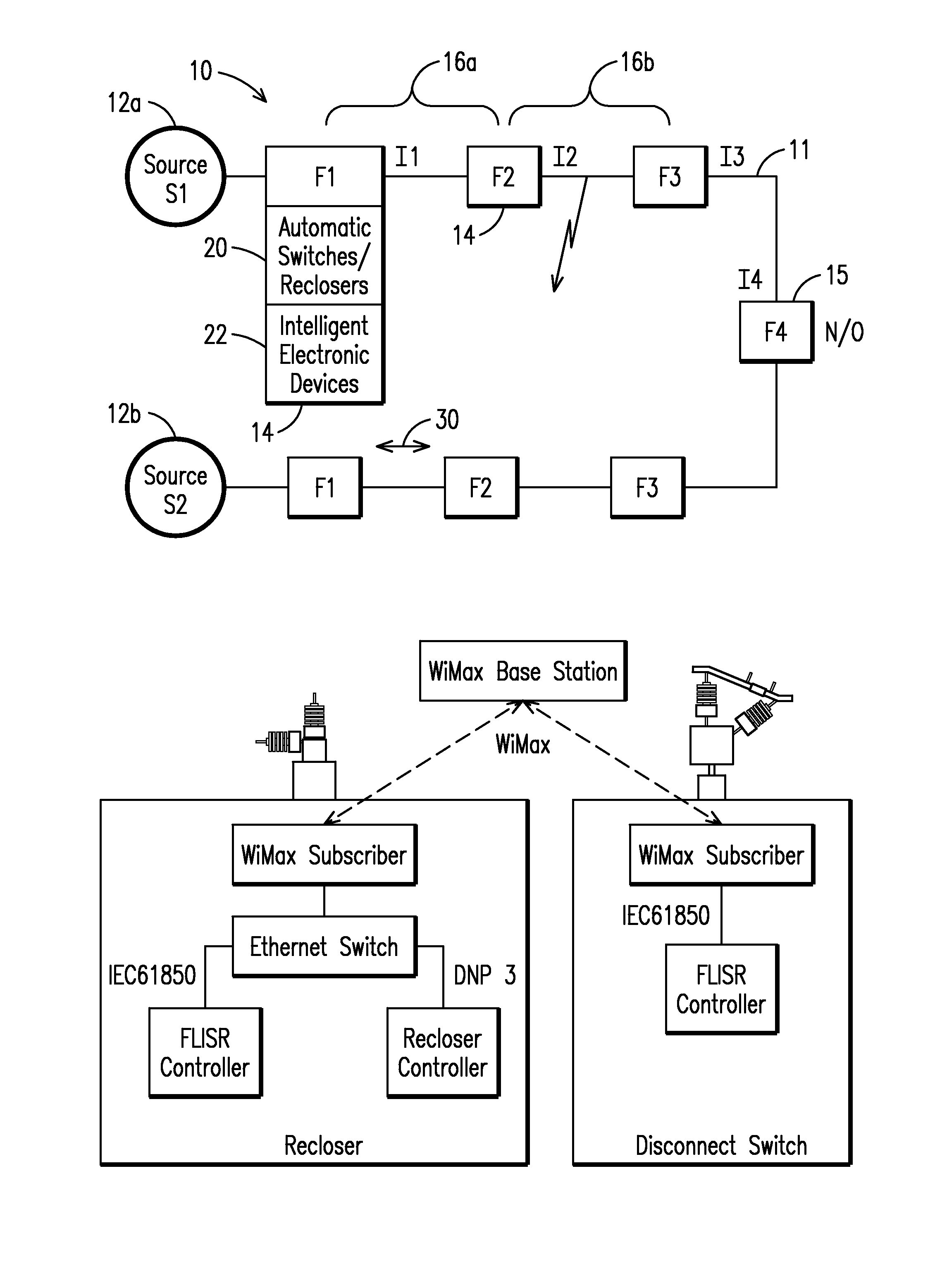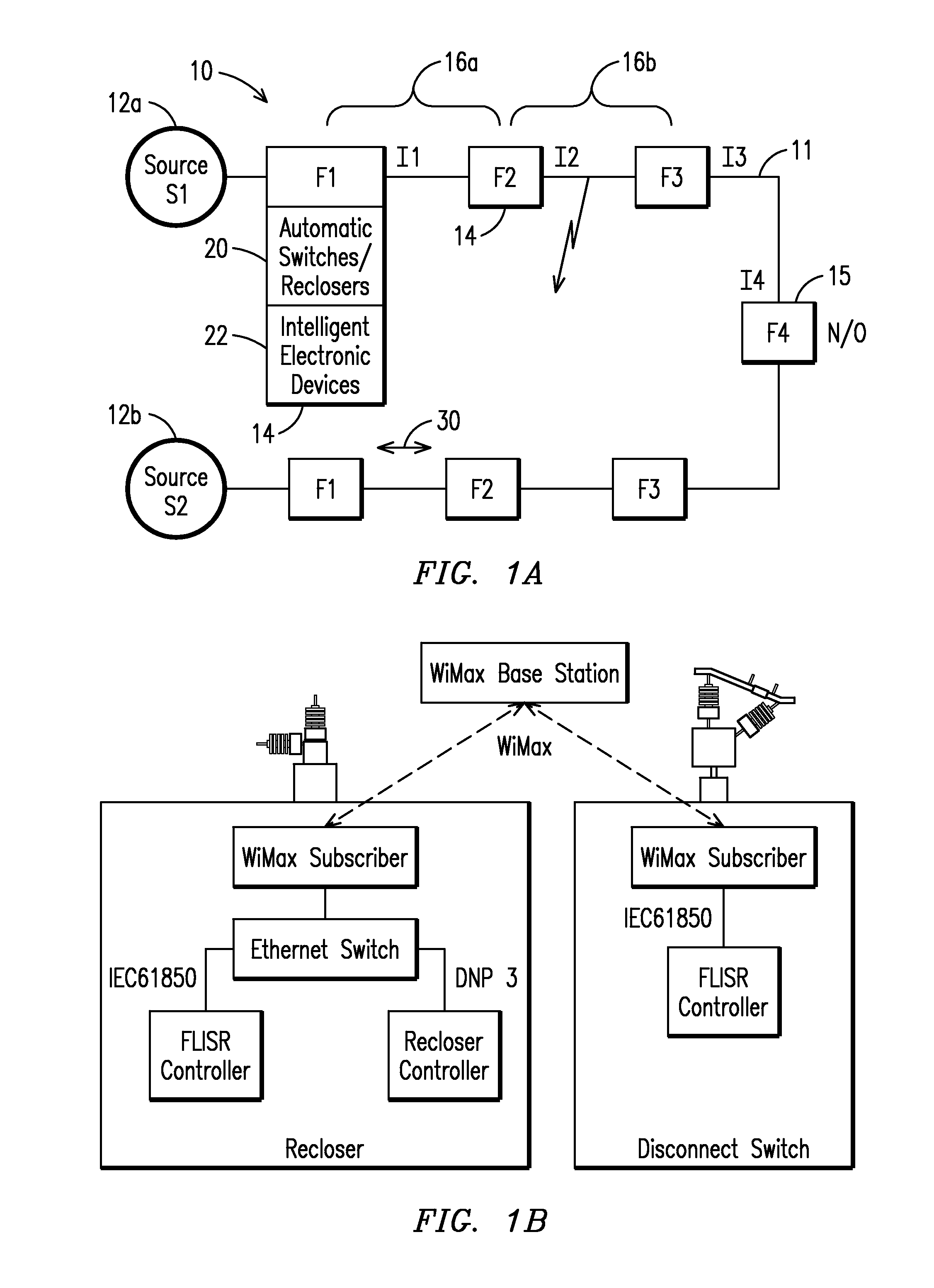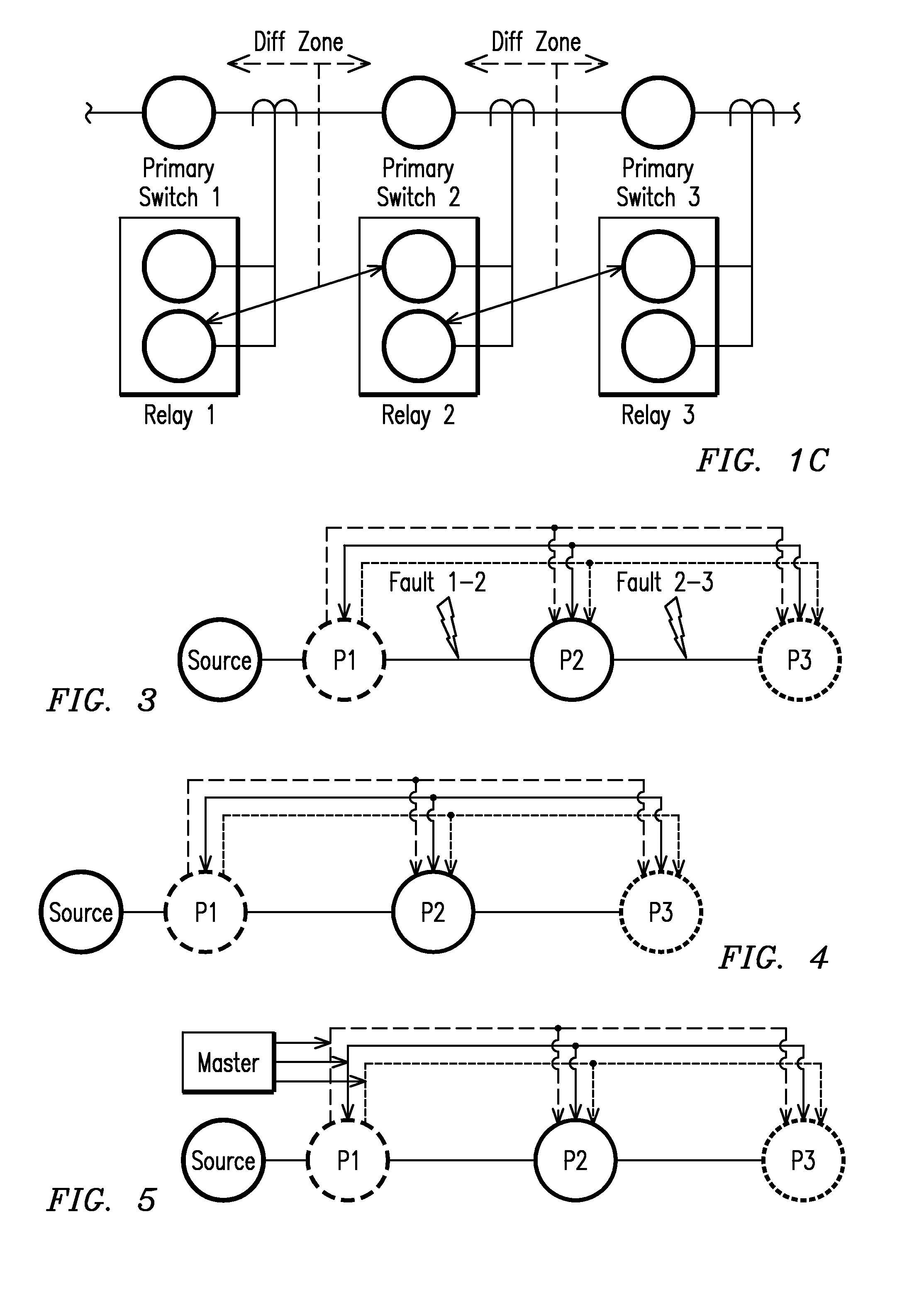Method and system for programming and implementing automated fault isolation and restoration using sequential logic
a sequential logic and fault isolation technology, applied in the direction of electric variable regulation, process and machine control, instruments, etc., can solve the problems of inability to adapt, take several hours, slow identification, etc., and achieve the effect of shortening the time, reducing the impact, and increasing the number of switching devices
- Summary
- Abstract
- Description
- Claims
- Application Information
AI Technical Summary
Benefits of technology
Problems solved by technology
Method used
Image
Examples
Embodiment Construction
[0042]Broadly speaking, the invention provides a method and system for programming and using automated fault isolation and restoration of high-speed fault detection of circuits in power distribution networks using peer-to-peer communication. The method and apparatus comprises high-speed fault detection of circuits in power distribution networks utilizing Intelligent Electronic Devices (IED) associated with switching devices communicating peer-to-peer to provide fast and accurate fault location information in feeder distribution systems over wireless communication networks. Sequential logic provides intelligent reclosing and load transfer schemes.
[0043]A typical feeder system is supplied by a substation through a circuit breaker and includes at least three of the following types of switching devices distributed along the line: reclosers, disconnect switches, sectionalizers, airbreak switches, and fuses. In addition capacitor banks and voltage regulators are included in most installat...
PUM
 Login to View More
Login to View More Abstract
Description
Claims
Application Information
 Login to View More
Login to View More - R&D
- Intellectual Property
- Life Sciences
- Materials
- Tech Scout
- Unparalleled Data Quality
- Higher Quality Content
- 60% Fewer Hallucinations
Browse by: Latest US Patents, China's latest patents, Technical Efficacy Thesaurus, Application Domain, Technology Topic, Popular Technical Reports.
© 2025 PatSnap. All rights reserved.Legal|Privacy policy|Modern Slavery Act Transparency Statement|Sitemap|About US| Contact US: help@patsnap.com



